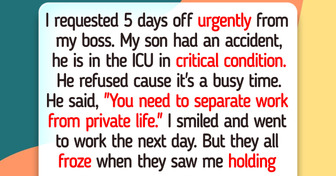13 People Who Discovered Hidden Truths About Their Partners

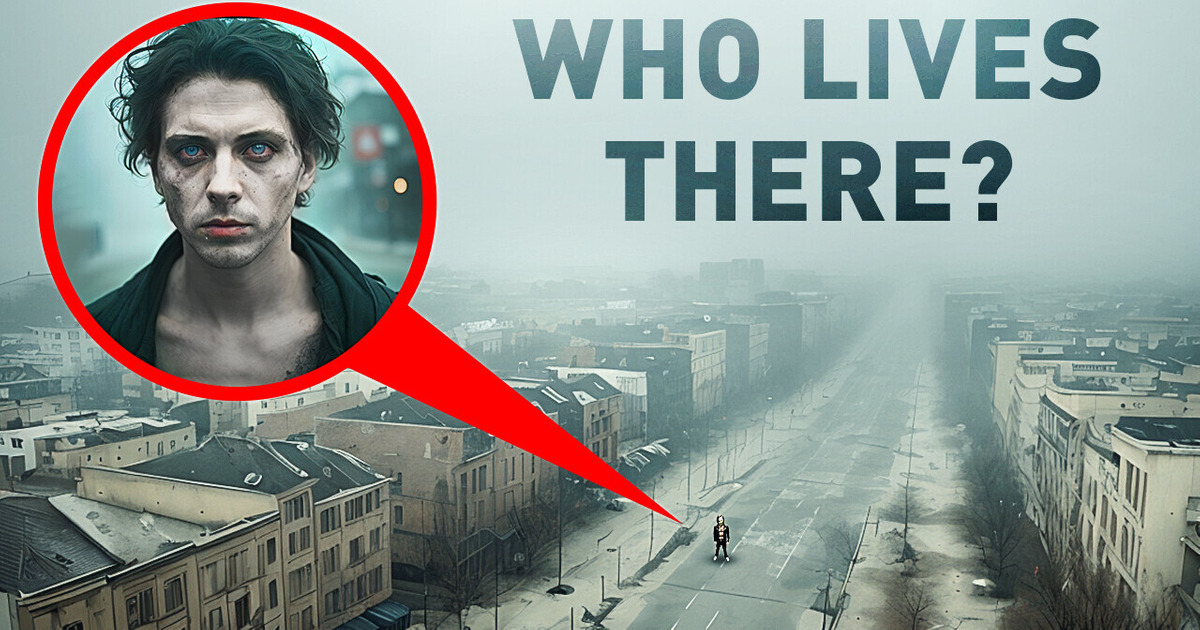
The mystery surrounding ghost towns is hard to ignore. Today, these eerie places serve as a window into the past, offering a glimpse into a time and way of life that has long since disappeared.
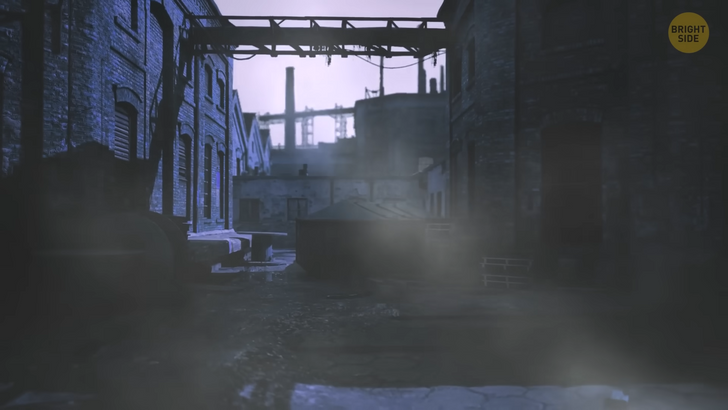
You may want to think twice before putting this one on your bucket list. Centralia n Pennsylvania, United States, became a ghost town in 1992. This was a former coal mine, and it’s been on fire since 1962! Well, not the town itself, but the mine tunnels.
It’s a mystery how the fire first started. It quickly spread through the tunnels, and no one has been able to put it out. The severity of the situation didn’t reveal its full scale for 17 years. Town inhabitants began to get sick, sinkholes appeared, and the ground became very hot even to the touch.
Things kept getting worse, so in 1992, the state decided to make people move away. Now, there’s a court order, and people aren’t allowed to pass down their property or sell it. Experts say that the coal under the town’s surface could continue to burn. The fire could stay lit for 250 years!
So today, the town stays abandoned and smoldering. It became a tourist spot. The fame of this place has even influenced the media industry. Centralia is what inspired Silent Hill. This video game got many fans thanks to its design and atmosphere. Playing a game is cool, but visiting such a town might not be the best idea.
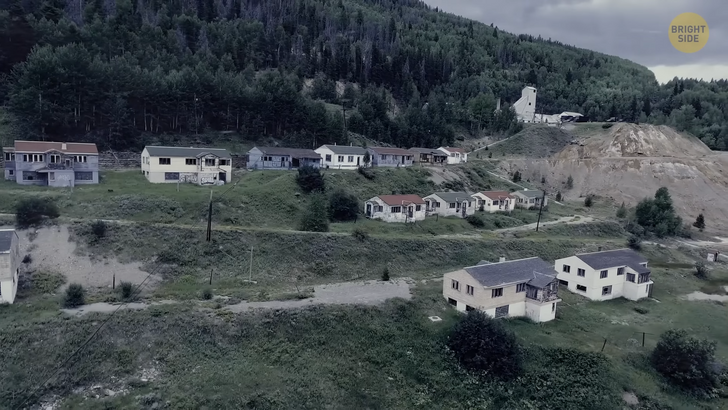
Next, we have a gold-mining ghost town full of legends and curses. I invite you to visit Bodie. In its heyday, it was a thriving town with almost 10,000 people that hung out at over 60 saloons. Also, the town was pretty notorious for its lawlessness. After all, it was a Wild West Town in the 1800s.
By the 1880s, the boom was over, and the population had decreased. A couple of smaller mining companies went bankrupt, and people began to leave. Mining activities continued up until 1942, so the abandonment of the town was gradual. Now the town has many vacated homes still occupied with the possessions of those who got up and left.
That’s where things get interesting. Today, the town remains preserved in Bodie State Historic Park. Visitors come and see what life was like in a Wild West town during the Gold Rush era. Not just visitors arrive at the park, though. Apology letters arrive at Bodie State Historic Park, too.
Many of them are usually handwritten and often anonymous. These anonymous writers usually also add various things to the envelopes which they took away from the town. Legend has it that any visitor who dares to take any object from the town, even a piece of rock, will be punished for doing so and be chased with bad luck.
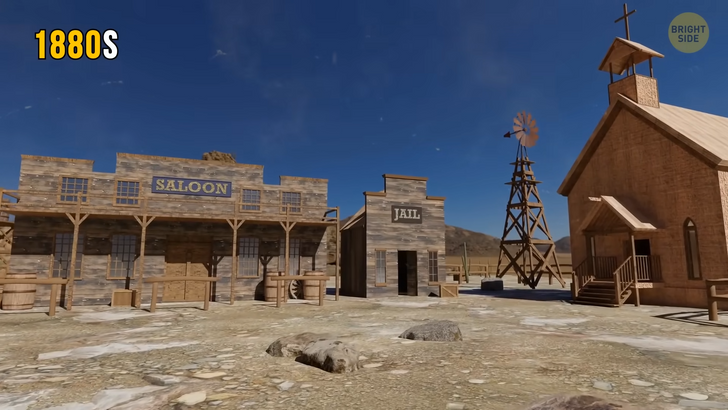
The letters are all about apologies and regrets. Here are 2 letter examples. The first one was found in Bodie in 2002. It was short and precise; “fair warning for anyone that thinks this is just folklore — my life has never seen such turmoil. Please take my warning and do not remove even a speck of dust.”
Another letter says, “Please find enclosed one weatherbeaten old shoe. The shoe was removed from Bodie during the month of August 1978... My trail of misfortune is so long and depressing it can’t be listed here.”
So how did this myth begin? Would you believe me if I said that one ranger started this rumor? Years ago, this worker invented the misfortune legend to prevent visitors from taking items from the area! It had an effect the state parks service didn’t even imagine. Some people took it to another level by taking a piano from a house.
The park administrators say that that person just loaded the piano onto the back of a truck and drove it away. That’s a severe case, though; people generally get small stuff. Some people even returned the things they purchased in the park’s gift store. Rangers now spot the “curse letter” at first sight.
They say that nearly every time a ranger goes to the post office to pick up mail, they find a mailed cursed artifact too. Collected letters are on display in the Bodie museum. In this town, thinking about ghosts is not a shocker. Do you think there’s any truth behind this legend?
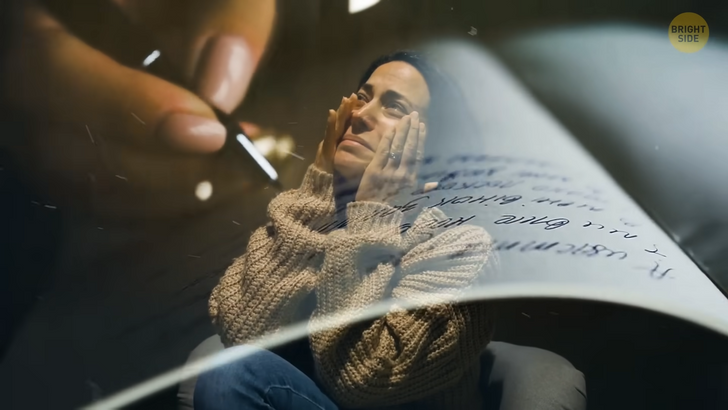
Shall we fly to Dallol in Ethiopia? It’s the hottest place on earth! Between 1960 and 1966, the average annual temperature was 95 degrees Fahrenheit. Since it’s one of the most remote places on the planet, no one was enthusiastic about living there.
Today people travel to the area only to collect salt. It’s not just high temperatures that make the area dangerous; the humidity level is also high. There is an average of about 60 percent humidity which means the place never cools off. Does anyone want to stay in a 24/7 sauna? In the 1960s, the Parsons Company of the US conducted geological surveys in Dallol.
Today, some buildings related to the company remain there, all of which were constructed with salt blocks. That’s where you meet the ghost town. I should also mention that Dallol is filled with natural sulfur pools. The scenery is mesmerizing, but it’s also quite toxic. So, you can explore the area, accompanied by dangerous fumes and extreme heat. I feel like it’s best to walk around with a guide or completely stay away.
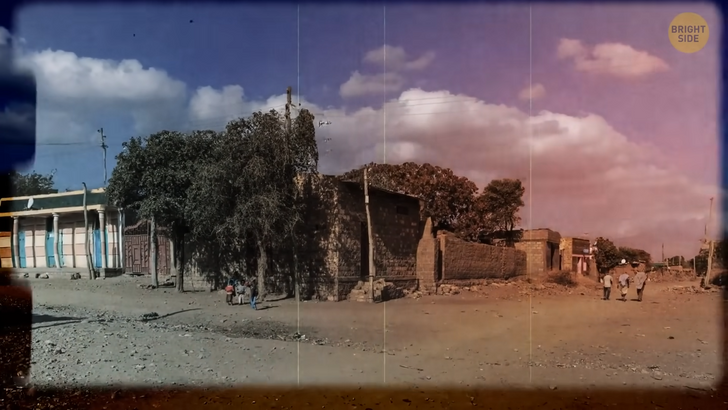
The next stop is Romania. Geamana [Dzha-ma-NA] turned into a ghost town in 1978. It was an ordinary Eastern European village. Everything changed for the townspeople when copper reserves were discovered near the area in the late 1970s.
Mining produced waste, and it had to be disposed of. Residents of Geamana had to abandon their village so that there was enough room to dispose of waste. A few stubborn locals moved to the edges of the flood area and continue to live there without public infrastructure.
Unfortunately, the water of the village turned into a toxic soup. If you visit the area today, all you can see are submerged buildings. Some of the rooftops and the church steeple are still visible in the poisonous, watery landscape. The only way to get to the lake is by mud tracks, which may not be suitable for all cars. Keep this in mind if you are planning on adding this place to your must-see ghost town list.
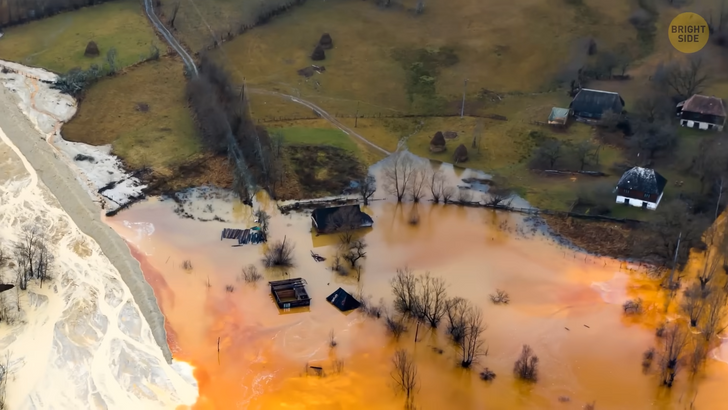
Let’s continue with Kolmanskop. It’s a famous ghost town in the Namib Desert in southern Namibia. These days the town is ruled by desert sands. When you enter a building, you have to climb the small dunes in the corridors to reach another room.
Why was there a town in the middle of the desert? Because of a diamond-mining business. Back in the early 1900s, a rail worker named Zacharias Lewala discovered a diamond. Everything changed after his discovery.
The town turned into a bustling center with large, elegant houses in German architectural style. There were also structures such as a ballroom, theater, and sports hall. Oh, and don’t forget the ice factory and the first X-ray station in the Southern Hemisphere.
People started migrating there and lived in it until the mid-1950s. What happened then? The diamond mines dried up, and people left the town. I mean, the majestic houses have been nearly demolished by the wind and sand. Yet, you can imagine the former glory of the area by looking at the remains.
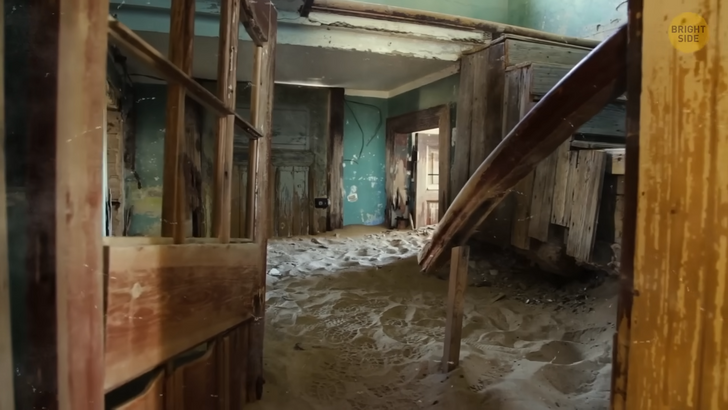
A mining company must have appreciated this beauty too. They restored some of the buildings and created an interesting museum in 1980. Thanks to these initiations, the town has become a tourist attraction.
Kolmanskop’s turned into a perfect gem for filmmakers. No wonder why the town was used several times as a set. Photographers love this place too. Even though it’s been photographed a lot, there’s always something new waiting to be discovered.
You may just need to crawl on your hands and knees to get to a less-accessed room or corridor to take an amazing pic! If you had a chance to visit one of these ghost towns, which would you pick?



